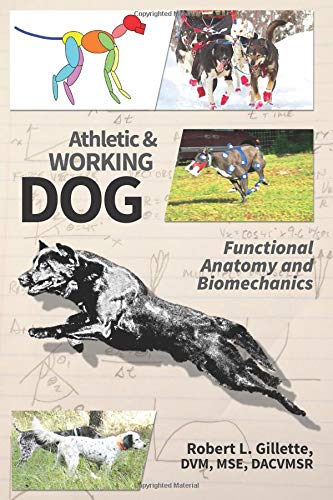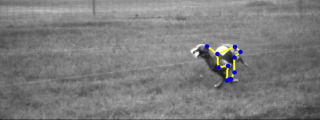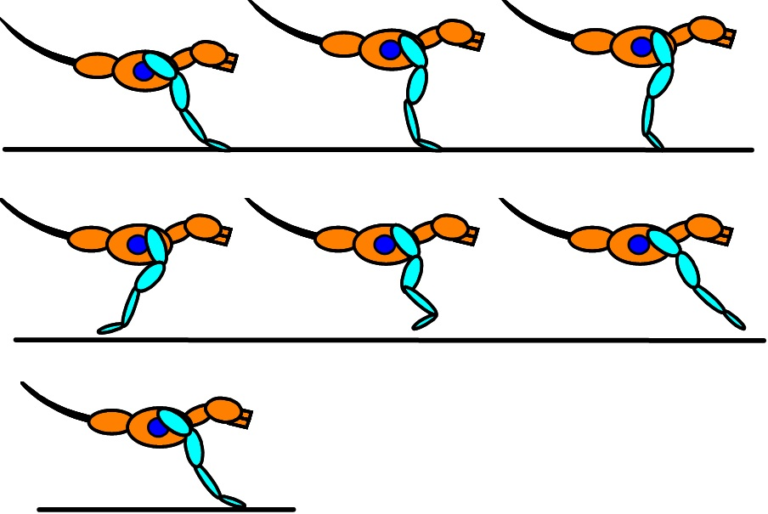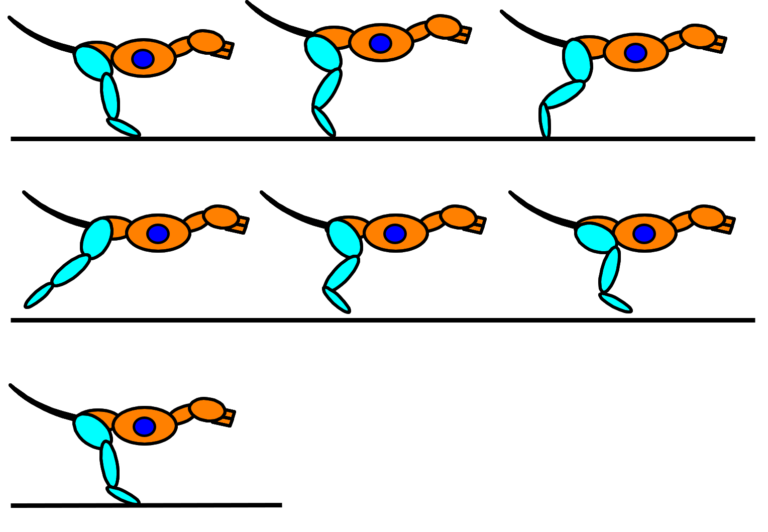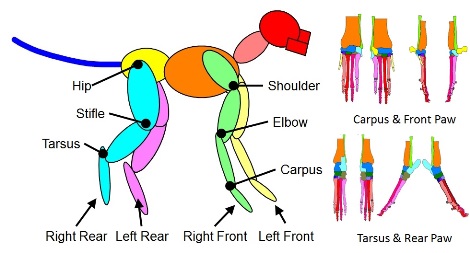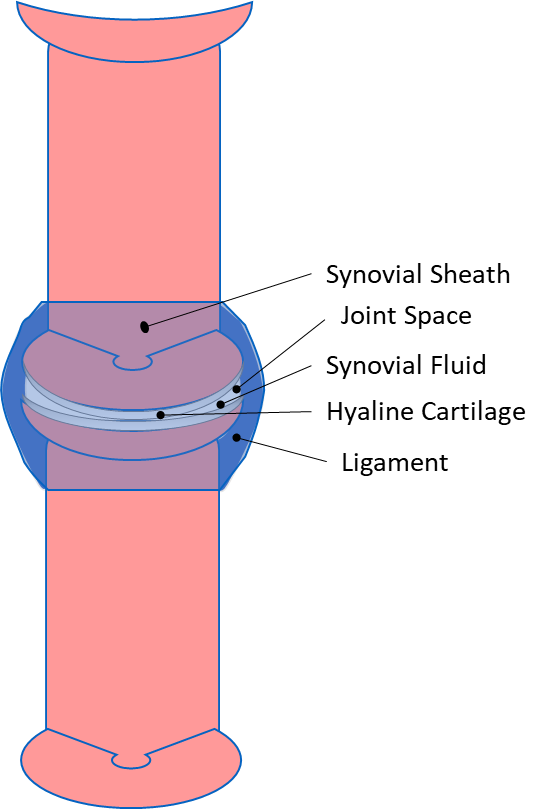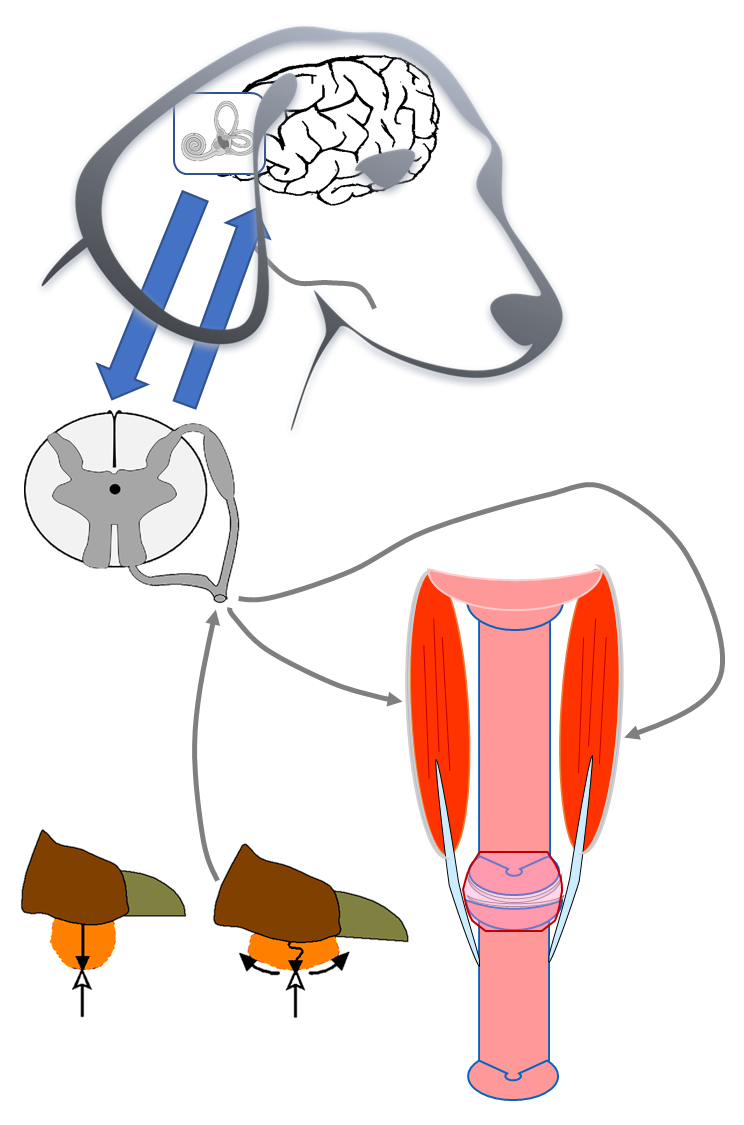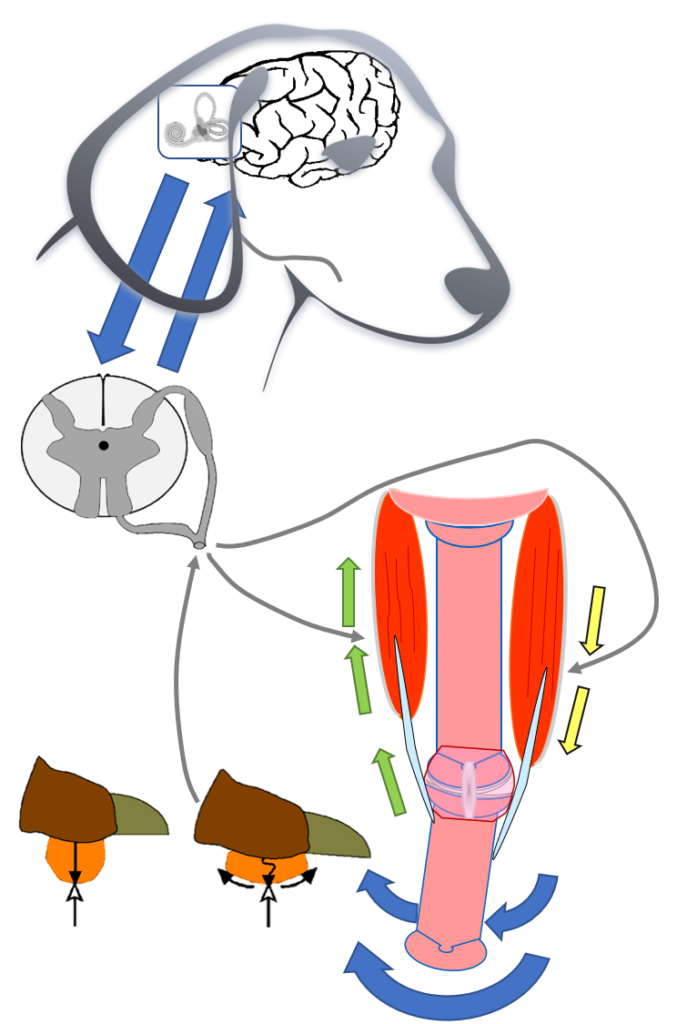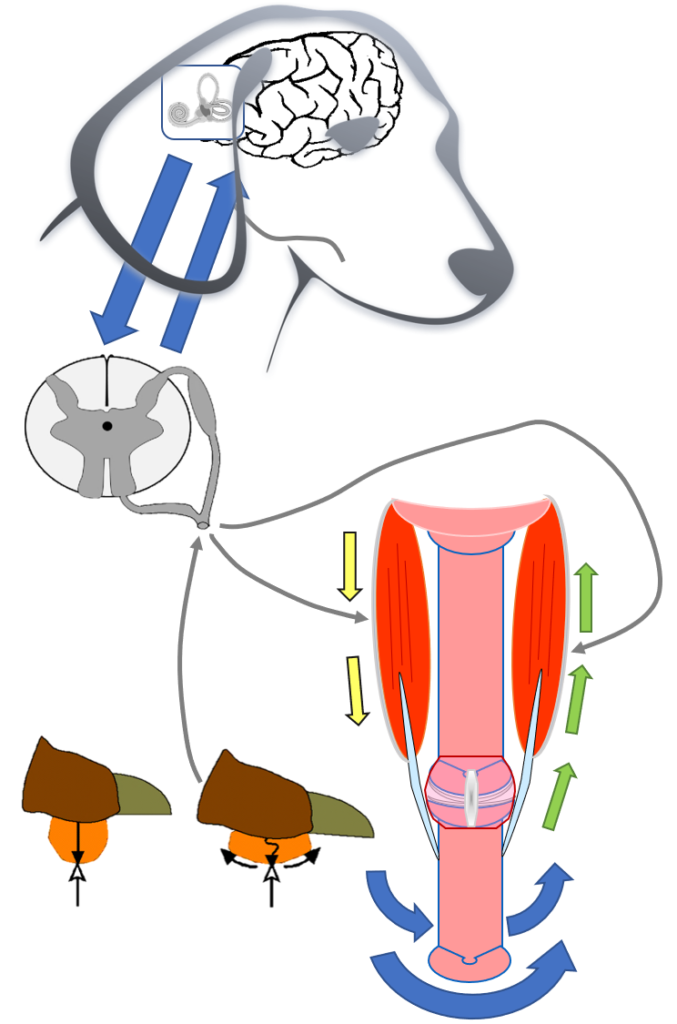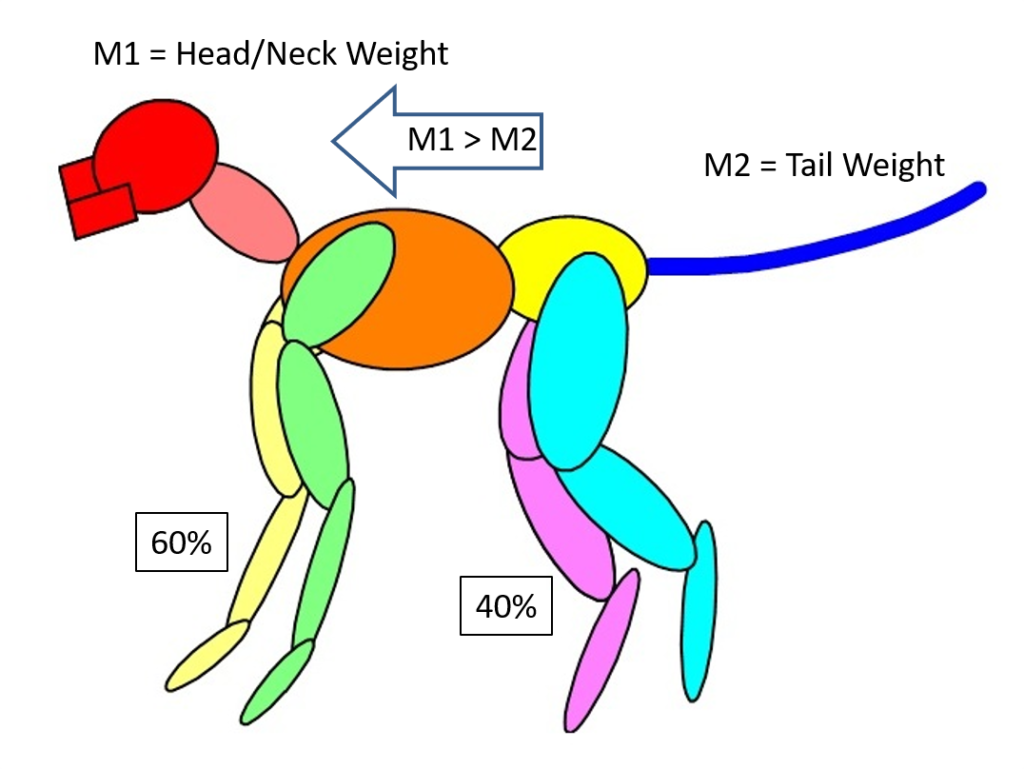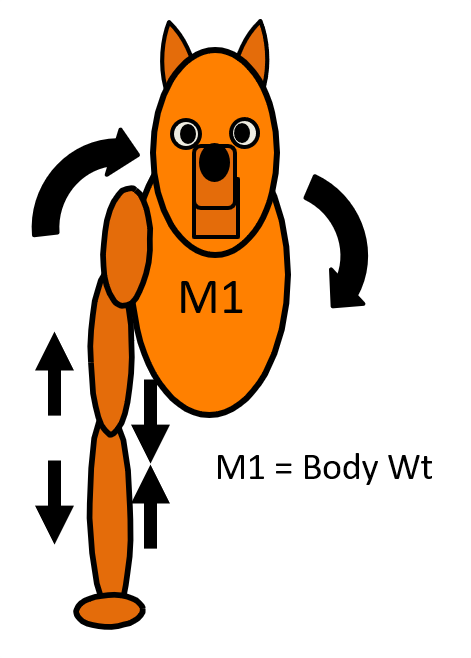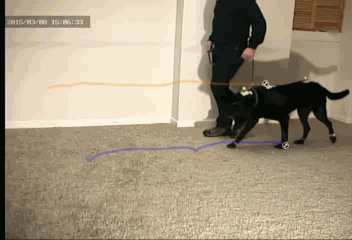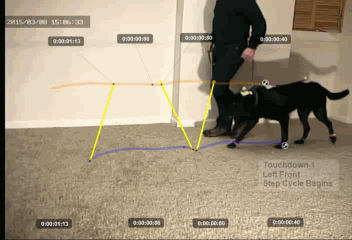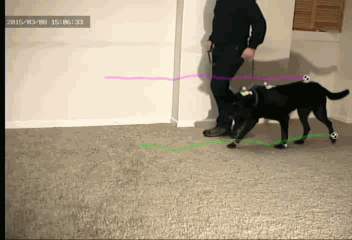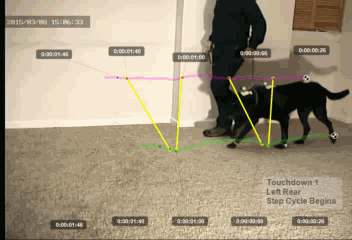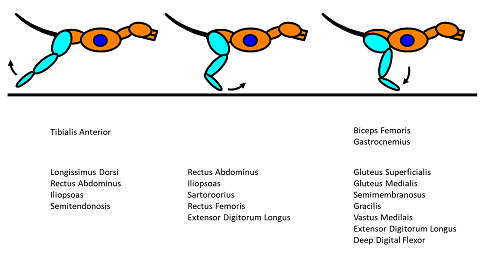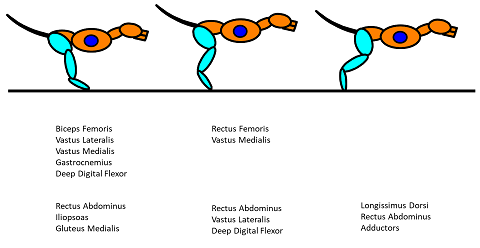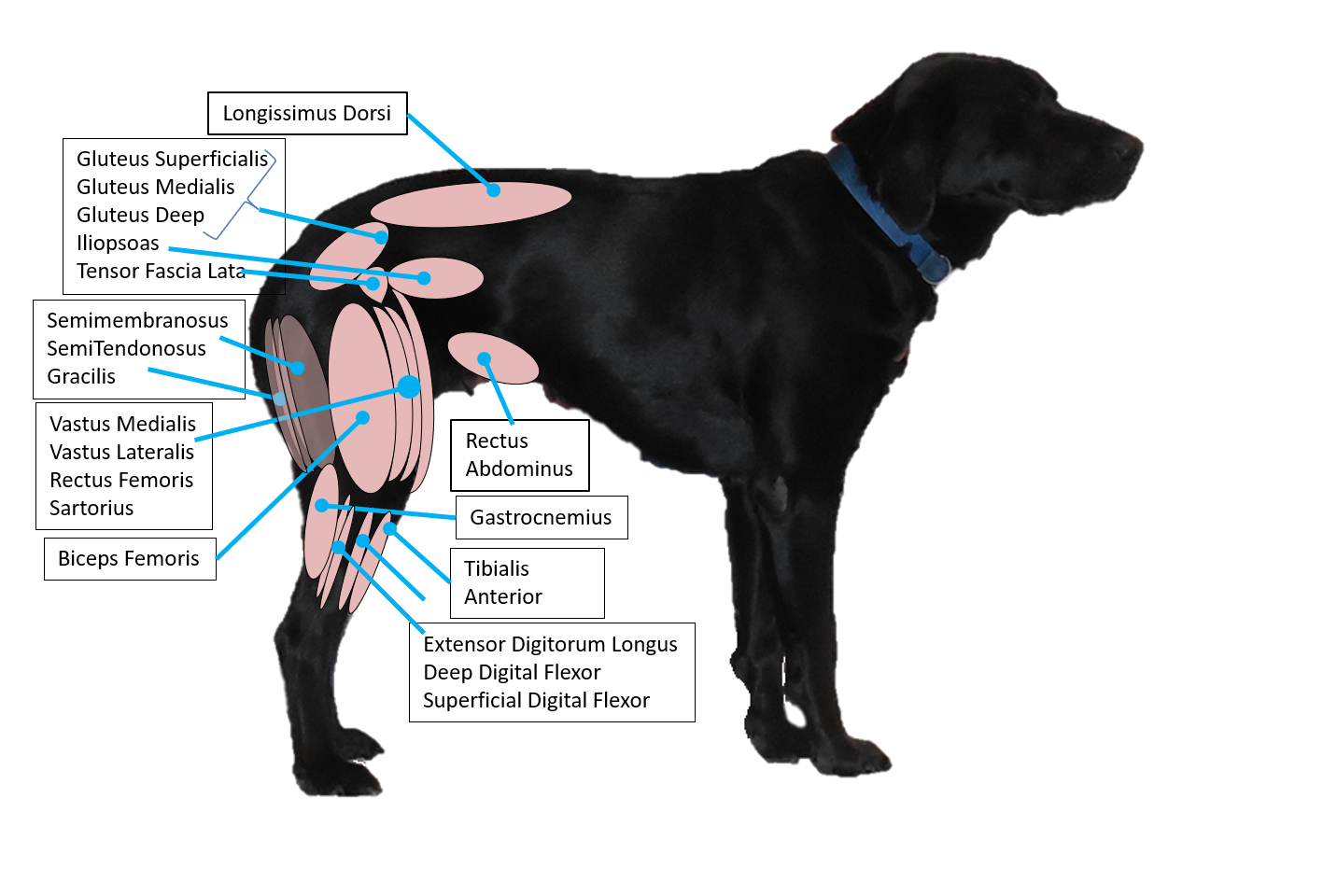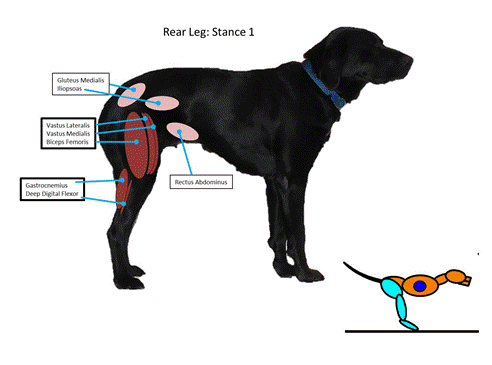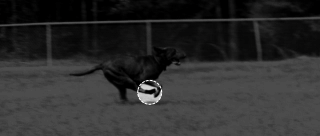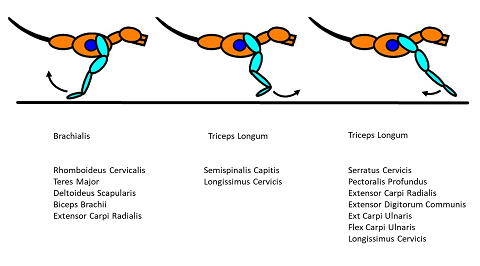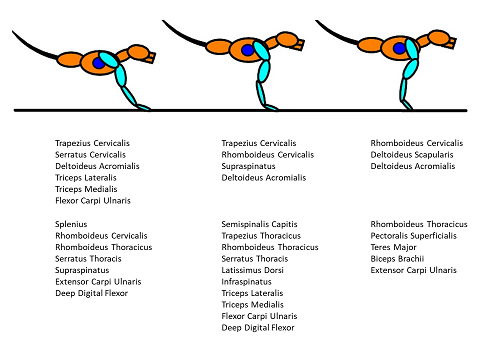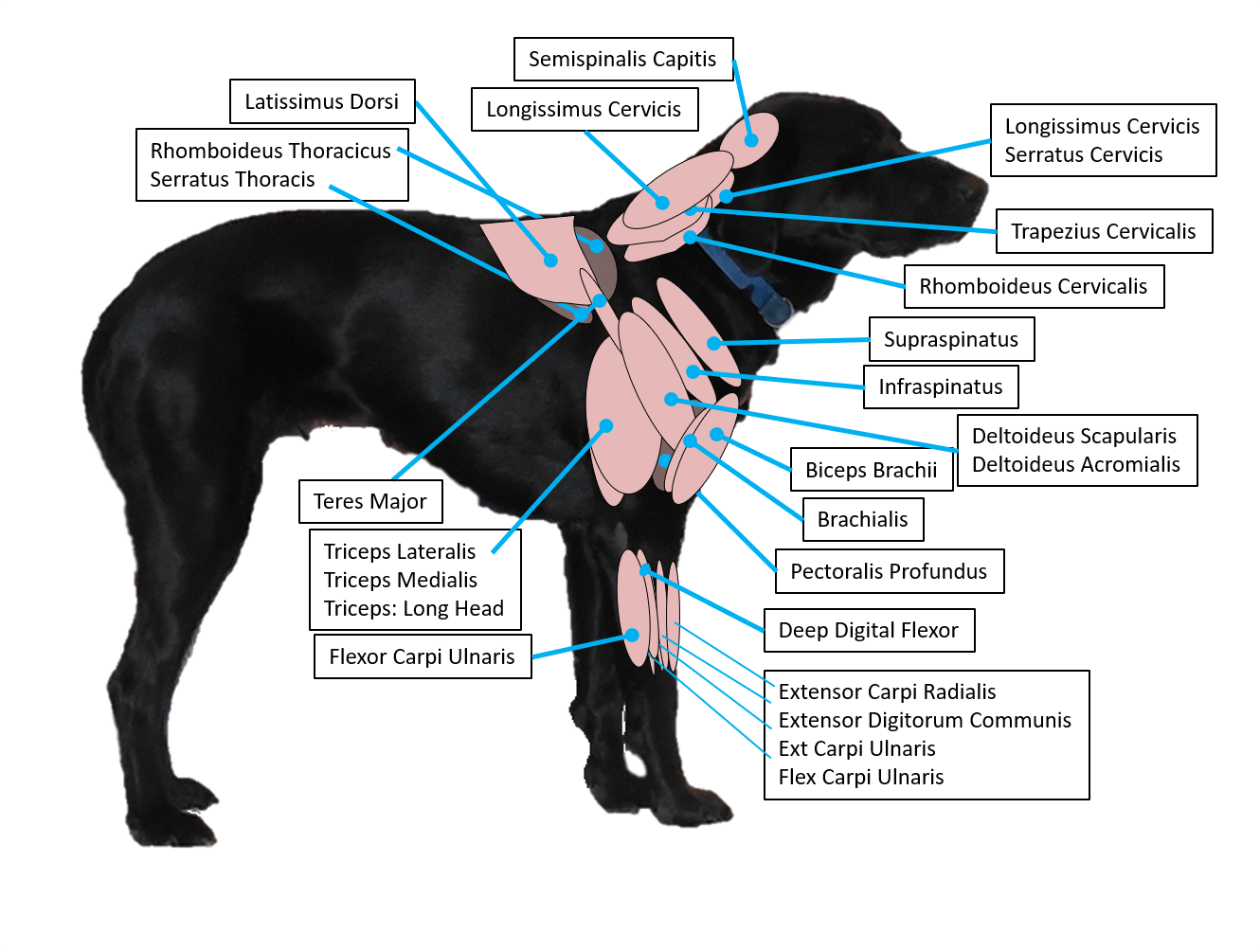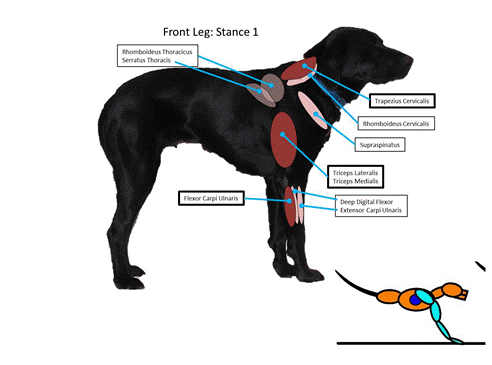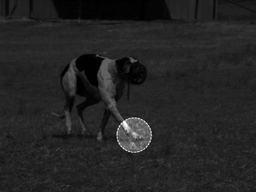Dog movement can be viewed from many different aspects. In the working dog world or athletic dog world, optimal movement results in optimal performance and a lengthy operational career. In the pet world, movement is taken for granted until it is not normal. This can create a variety of perceptions because the definition of abnormal is dependent upon the eye of the observer. This results in a diversity in how we define a successful therapeutic outcome. Therapeutic success, in general, is defined as how the owner defines quality of life. If the owner feels the dog is doing good, the outcome is good. In reality the goal of the Veterinarian or trainer should be to optimize the components of movement and reduce or eliminate any structural faults or pain. This mindset should result in a high level of success in the eyes of the owner and the health of the dog.When developing a 1) conditioning program for an athletic dog, 2) diagnosing a lameness, or 3) creating a rehabilitation program for a dog, it is important to have an understanding of the components of movement or locomotion. Musculoskeletal movement and it’s actions are the core focus when trying to understand lameness, rehabilitation and performance of the dog. Locomotion and segmental movement are terms that can be used to describe the musculoskeletal actions involved when an animal is moving or performing different related actions. Locomotion is described as the movements of the body that allows it to get from one location to another. The body is made of components or segments, so it is the sum of the segmental movements that produce locomotion. Discerning the difference between body locomotion and segmental movement, allows for relative descriptors. Gait and stride are two terms that can be used to describe body locomotion. Limb movement, step cycle, stance phase, swing phase, flexion, extension, angular displacement and range-of-motion are terms used when describing segmental movement. We typically visualize the locomotor actions of the dog’s body as a whole when we analyze them for lameness, prepare a rehabilitation protocol or develop a conditioning for a dog, but we should remember to focus on the segmental actions that create this movement as well.
Understanding the muscular actions of movement is important when diagnosing lameness, developing a conditioning program or creating a rehabilitation protocol. When a joint is inflamed or osteoarthritis is present, it changes how the legs move, thus affecting the related muscular actions. Neural inflammation (i.e. Lumbosacral Disease, etc) will also affect how the muscles move the leg. In these scenarios, the primary problem should be addressed but so should the secondary muscle inflammation, the related trigger points and fascial issues. Having a sound understanding of the muscular actions in locomotion should help the practitioner prepare the proper therapeutic design.
Step Cycle
Locomotion is made of the combined actions of the legs balanced with the core efforts of the abdomen, thorax and neck. Each leg will go through a step cycle. Therefore a biped (human) will have two step cycles, a quadruped (dog) will have four step cycles and centipede would have 100 step cycles. It is typically defined as the actions the leg goes through from one point in the cycle until the leg again reaches that point of the cycle. It is generally defined as the leg actions that occur starting at the first touchdown of the paw until that paw again touches down.
Complexity of the Movement Actions
Each leg is made of components (segments) which can be defined in different manners. One way is anatomically by the various tissue types, i.e, bones, muscles, etc. Another way to define the limb is geographically from the proximity to the body core. These would include (from proximal to distal) the humeral/femoral, radial/tibial, carpal/tarsal and distal extremities (paws). These are defined as the areas between the joints. Assessing segmental movement allows for an understanding of how they inter-relate with each other.
Bony Segments
The joints between the bones allow for stability and intersegmental movement. The articulation is between the ends of two bones. The Hyaline Cartilage covers the ends of the bones and provides a smooth slick surface for them to glide over each other. The Synovial Sheath surrounds the joint. The Joint Space is between the bones and is filled with Synovial Fluid. The Ligaments are toughened tissues within the synovial sheath that act to hold the bones together.
Neuromuscular Activities
Nerves stimulate muscles which act on the bones to create the segmental movements of each limb (leg). The forces of movement affect which muscles of each leg are needed to create or balance the related segmental movements during paw impact, paw push-off and the forward swing of the leg. The actions of the body can be described as reactionary or intentional. The classic definition of a reactionary action is the quick pulling away of the hand when it touches something hot. The brain is not involved in this action. The heat is felt, sending a message to the spinal cord which stimulates the muscular action involved in retracting the hand. An example of an intentional action would reaching out to pick up a drink. The brain determines that it wants the body to pick up a glass to drink. The arm is raised as it extends toward the glass, while the fingers are positioned in a way that allows them to grasp the glass. The glass is consciously grasped and then brought to a specific position that would allow the mouth and lips to consume the drink.
Nerves and muscles are involved in any body or component movement. Related to muscles and how they apply to an action, some muscles are primary movers which have related antagonistic muscles that work against them, there are synergistic muscles that assist in the actions and then there are stabilizing muscles that act to hold bones in place (i.e. vertebral muscles maintaining posture). All of these are continually acting in an intentional or reactionary manner as we move or stand.
These are learned actions. The training begins as a little puppy, just as it begins in small children. They start out by crawling around to get from one place to another. Next, they try standing up and balancing, so they don’t fall down. Then they learn to pick up one leg while maintaining balance and stability with the rest of he body. Their body then learns all sorts of various movements and locomotion. This learning can be used in training scenarios to optimize actions related to competition or activities related to work. Later the body learns to adapt its actions when injuries or musculoskeletal pain occur.
The tissues involved in the actions of movement. Bones provide support. Joints allow movement. Muscles create movement. Nerves stimulate movement. The Brain can dictate movement. There are nerve receptors (i.e. Vestibular system, Mechanoreceptors, etc) throughout the body that provide spatial and pressure information to help guide appropriate balanced muscle activity.
Muscle Actions
Muscles must work together to provide smooth movement. To allow for the bending at a bony articulation (joint), one set of muscles must contract at the same time that another group of muscles are relaxing in a balanced manner. In the example below, the primary muscles flex (green arrows) to create the actions while the antagonistic muscles relax (yellow arrows) in a balanced manner to allow the joint to bend in the designated manner. Synergistic muscles will assist the primary muscles in the movement. After the joint is bent, it can return to its normal position. In this case, opposite muscles act as the primary movers (green arrows), balanced by the antagonistic muscles (yellow arrows). In these activities the nerves and muscles are all trained or learn to perform the tasks. There are neural receptors that give feedback information to the system to allow for balanced movement and for proper positioning. The segments of the body interact and all work together to create movement and locomotion. This helps us to understand the complexity of movement.
Primary Muscles contract (green arrows) to create a flexing action at a joint. Antagonistic Muscles relax (yellow arrows) to allow it to occur. These actions are monitored and balanced via neural impulses from around the body.
When returning to the prior position, the opposite muscle actions occur. The one group of muscles relax (yellow arrows) while the other group flex (green arrows). Again, these actions are monitored and balanced via neural impulses from around the body.
Leg Actions in the Step Cycle: The Basis of Locomotion
The step cycle is the term that defines the cycle of actions of the tissues and structures that produce repetitive movement of the leg. As previously described, this involves a complex series of stimuli and cellular actions. Each leg plays its own part in the full action of locomotion. The forces of propulsion occur during the stance phase. Then the leg raises off the ground during the swing phase as it prepares to repeat the action. Understanding how this normally works is helpful when designing conditioning programs to get optimal neuromusculoskeletal activity over a period of time. It is the key to understanding how a greyhound sprints around a racetrack, a retriever can sprint multiple times over rough terrain to bring back game, how a pointer can run through fields or forests for multiple hours scenting pheasants or grouse, how a foxhound can run the wily predator non-stop for hours on end and how a sled dog can run over many miles in snowy-cold weather. It is the basis of preparing a multipurpose canine to handle its workload. This may include being flown into a desert or jungle, serving as point while detecting bombs on a patrol and finally taking down the enemy, then returning back to the place of distraction to be flown home.
Locomotion can be disrupted by faults in these actions as shown by Adrian, et al (2017), Eward, et al. (2003) and Bockstahler, et. al. (2012). Understanding the actions of leg movement can assist the clinician when diagnosing lameness. These issues can be the result of altered nervous stimulation, improper muscle activity or altered joint function. Injury is a common cause of these problems. The significance of the injury is dependent upon how much it affects the locomotion or gait, which is a culmination of the step cycles. When diagnosing altered movement, or a lameness, it is important to have a sound understanding of the musculoskeletal anatomy, how the muscles move the segments and what is normal movement. If this is understood, diagnosing the lameness is based on identifying which actions are abnormal.
The rehabilitation program should be designed to return the limb or body to its normal activity. This may be simply reconditioning the muscles to their prior actions or it may involve reeducating or retraining the neuromuscular system to function in a new way in relation to a new injury-created skeletal, muscular or neural status. That is why it is important to have an understanding of the actions of the normal step cycle.
The front legs typically bear more weight than the rear legs in the normal dog. The weight of the head and neck shift the weight forward.
Each leg of the dog will bear the forces differently. When the right front is in the stance phase, the weight of the body will act on its medial aspect. This creates distractive forces on the outside and compressive forces on the inside of the leg.
Actions of the Step Cycle
The step cycle of a dog’s leg, or limb, is typically defined as beginning when the paw first touches down and ends when that paw again touches down. Each leg will go through a step cycle but how the forces are received during the cycle are dependent on the anatomical design of the dog. Because of this, each leg will have different forces apply to it. The dog’s design is similar to a four legged table. The four legs support the body but there are two appendages the are attached to the front (the head) and back (the tail). In the case of most any quadruped (a four legged animal) the weight of the head balances the weight towards the front end. The head weighs more than the tail, so the front legs end up bearing more weight than the back legs. The right legs will bear weight different than the left legs. The legs of the right side will have to offset the weight of the body being on their left side, while the legs on the left have to offset the weight of the body being on their right side.
Visualizing the Step Cycle
Below are videos of a front leg step cycle and a rear leg step cycle. The movement has been digitized to illustrate the action. The cycle includes a stance phase and swing phase. In the stance phase the weight of the body is transferred over the legs point of contact. Then the leg is lifted up and moved forward until it again makes contact for the swing phase of the cycle.
Step Cycle of the Front Leg of a Dog that has been digitized to illustrate the stance phase and the swing phase.
Muscles used throughout the Step Cycle
There are primary muscle actions, synergistic muscle actions and related antagonistic muscles working together in various levels that create the movement of the leg throughout the phases of the step cycle. Tokuriki described the electromyographic (EMG) measurements of the skeletal muscles during locomotion of normal dogs (Tokuriki, 1973, Tokuriki, 1973, Tokuriki, 1974). Other publications have also reported muscle activity using EMG of specific muscles during the step cycle showing similar results as Tokuriki. The muscle activity varied according to the roles each muscle played in the various phases of activity. He graded the muscle activity from 0 – 4, with zero being no activity reported and four being a very marked activity. These measurements can be used understand which muscles are the primary movers, the synergistic muscles and the antagonistic muscles. In the images below the muscles that were measured at a level of 4 are listed in the top rows as being primary movers. The muscles listed in the second row were measured at a level 3. Muscles measured as a 0, 1 or 2 were not listed to minimize space that would be needed to list all of the muscles measured.
This knowledge can be used when developing conditioning programs, diagnosing lameness or preparing rehabilitation protocols. It is also helpful information related to how and why certain injuries occur or develop. For example muscle injuries that are sometimes seen in racing Greyhounds are in the Gracillis and the Long Head of the Triceps. These would relate to the stresses applied in the pre-stance phase just before and as the paw makes contact with the surface.
It is important to note that these measurements are related to straight ahead movement. These muscles will be utilized in any forward movement. The act of turning or jumping will utilize additional muscles to create the varied movement (Breitfuss, 2014, McLean, 2019, Cullen, 2016). To properly prepare the body for any event or just to maintain a healthy structure it is important to include many varied activities in the exercise regimen. This will condition all muscles that will or could be used in day to day activities, work or competition. A designed exercise program will optimize the neuromusculoskeletal functions to perform the tasks associated with the activity. This will act to minimize the possibilities of related injuries. This is also applicable to designing a rehabilitation program.
Goslow, et. al. showed, in addition to muscle activity during the phases of the step cycle, that some muscles play a role in joint stability. These muscles are important in the prevention of injuries. Conditioning programs or rehabilitation protocols that include actions that strengthen these muscles can be developed to optimize structural stability resulting in career longevity and improved rehabilitation outcomes.
Rear Leg Muscle Actions
Primary and synergistic muscles of the rear leg utilized during the three phases of the Swing Phase of the step cycle.
Muscles of Action in the Rear Leg of the Dog. These muscles play a major role in moving the leg during the step cycle.
All of the muscles of the pelvic region of the dog are used at some point throughout the step cycle of the rear leg. The muscles listed above play the greatest role in the straight away locomotion of the dog in all gait patterns. The various gaits will alter the level of how the forces affect each of them but they participate in all locomotion. The act of turning, or altering direction, will change the level that each muscle will be used and may change which ones are carrying the greatest load at some point. When the dog is running the forces are at their greatest. The rear end of the dog plays the largest role in propelling the dog forward and upwards. These are the muscles that are key to sprinting speed. In general, the focus of the conditioning program should be on the primary muscles and the synergistic muscles associated with the rear leg step cycle. Of these muscles it is important to recognize that the digital muscles play a primary role in the actions. We often focus on the larger muscle groups and forget about the digital flexors.
Front Leg Muscle Actions
Primary and synergistic muscles of the front leg utilized during the three phases of the Swing Phase of the step cycle.
Muscles of Action in the Front Leg of the Dog. These muscles play a major role in moving the leg during the step cycle.
All of the muscles of the thoracic region of the dog are used at some point throughout the step cycle of the front leg. The muscles listed above play the greatest role in the straight away locomotion of the dog in all gait patterns. The various gaits will alter the level of how the forces affect each of them but they participate in all locomotion. The front end of the dog plays the largest role in turning or navigation. The act of turning, or altering direction, will change the level that each muscle will be used and may change which ones are carrying the greatest load at some point. When the dog is running the forces are at their greatest. The front end of the dog plays the largest role in stabilizing the body while the rear legs prepare to re-engage. These are the muscles that are key to balance, navigation and agility. In general, the focus of the conditioning program should be on the primary muscles and the synergistic muscles associated with the front leg step cycle. Of these muscles it is important to recognize that the digital muscles play a primary role in the actions. We often focus on the larger muscle groups and forget about the digital flexors.
Spring Affect
Goslow, et. al. also showed that some muscles are actively contracting while being stretched which results in an elastic storage or spring effect. Physiologically this is defined as an Eccentric Contraction. In the world of physics, the stretching of the muscles associated with forces of impact creates potential energy. This potential energy is released creating kinetic energy which assists in the propulsion action of the leg. This effect increases with an increase in velocity and related gait adaptations. So the spring effect was more prevalent in the gallop gait. This can play an important role in sprinting activities or sprinting competitions like lure coursing, agility or flyball. The stronger or better conditioned the musculotendinous structures are, the better able they are at handling the stretch or spring actions of these muscles. Eccentric contractions can lead to muscle injury. So the better the muscles are conditioned results in a reduced risk of injury. Fatigue plays a major factor in how these muscles handle the stretch or spring action on muscles. As the muscles fatigue, they will lose their tautness, which reduces the spring affect. This results in the muscles actually having to do more work as the kinetic energy drops. As fatigue sets in, the potential for injury increases. The joints and muscles are exposed to strains that may be above the strength of the structures. This applies to every activity the dog performs.
Muscle Conditioning and Summary
Proper conditioning is the key to optimizing performance and minimizing injury and other health issues. It is an in-depth topic which entire textbooks are devoted. This discussion was limited to the conditioning of specific muscles. There are specific muscles utilized in each of the phases of the step cycle. The step cycle is a part of all locomotion so these muscles will be in constant use in the actions of all dogs. This is important knowledge when we design exercises for the pet dog, develop conditioning programs for the athletic and working dogs and create rehabilitation protocols for injury recovery. The program or protocols should take into account the muscles being used, the neural patterns needed to create the actions and designed to properly strengthen the associated skeletal structures.
There are scientifically defined methods to approach how to develop a specific or personalized program. Wolff’s Law states that the bones in a healthy person or animal will adapt to the loads under which it is placed. Davis’ Law states that the related soft tissue in a healthy person or animal will adapt to the load under which it is placed. The SAID Principle (Specific Adaptations to Imposed Demands) can be used to develop the proper training and conditioning programs. It is based on the following: Speed- What type of speed training does the dog need to have for its activity?; Endurance- What type of endurance will the dog need for its activity (e.g. muscular and cardiovascular)?; Muscle Groups- Which muscle groups need to be trained for the dog’s activity?; Muscle Action- What type of velocity of contraction, synergistic firing of the muscle, and more will be required for the dog’s activity?; Energy Source- What energy sources will be used, and in what manner will they be used for the dog’s activity?; Injury Reduction- What type of injuries commonly occur in the dog’s activity and what type of conditioning is required to reduce those injuries? These physiological techniques are the basis of all defined exercise programs and can be used when working with a dog, or other animal, just as they are in the human world.
It was the intent of this discussion to introduce the reader to the complexity of nueromusculoskeletal movement and which muscles are utilized in movement and locomotion. Understanding which muscles are being utilized is the first step in implementing the above processes of the SAID principles of conditioning and training. It is typically recognized that the larger muscle groups of the proximal limbs are used in all locomotion. The role of the digital flexors, and to a lesser extent the extensors, is rarely taken into account. Neurological stimulation is another component that is taken for granted and is not commonly recognized as an important component of a conditioning program. As stated earlier, the information provided here is important when diagnosing lameness, developing a conditioning program or creating a rehabilitation protocol. When a joint is inflamed or osteoarthritis is present, it changes how the legs move, thus affecting the related muscular actions. Neural inflammation (i.e. Lumbosacral Disease, etc) will also affect how the muscles move the leg. In these scenarios, the primary problem should be addressed but so should the secondary muscle inflammation, the related trigger points and fascial issues. Having a sound understanding of the muscular actions in locomotion should help the practitioner prepare the proper therapeutic design. It is hoped that this has introduced the reader to which muscles are the primary movers in dog movement and that they can use this information to enhance their efforts in their related field. Any related questions can be sent to k9care@sportsvet.com.
Related Reading
Gillette, RL, (2019) Athletic and Working Dog: Functional Anatomy and Biomechanics. Gillette, Lancaster, SC
Gillette, RL, Conditioning and Training in the Canine Athlete, Proceedings, 2013 ACVS Veterinary Symposium, San Antonio, pp 508-510
References
Adrian, C. P., Haussler, K. K., Kawcak, C. E., et. al.(2019). Gait and electromyographic alterations due to early onset of injury and eventual rupture of the cranial cruciate ligament in dogs: A pilot study. Veterinary Surgery, 48(3), 388-400.
Bockstahler, B., Kräutler, C., Holler, P., et. al. (2012). Pelvic limb kinematics and surface electromyography of the vastus lateralis, biceps femoris, and gluteus medius muscle in dogs with hip osteoarthritis. Veterinary Surgery, 41(1), 54-62.
Breitfuss, K., Franz, M., Peham, C., & Bockstahler, B. (2015). Surface electromyography of the vastus lateralis, biceps femoris, and gluteus medius muscle in sound dogs during walking and specific physiotherapeutic exercises. Veterinary Surgery, 44(5), 588-595.
Cullen, K. L., Dickey, J. P., Brown, S. H., et. al. (2016). The magnitude of muscular activation of four canine forelimb muscles in dogs performing two agility-specific tasks. BMC veterinary research, 13(1), 68.
Eward, C., Gillette, R., & Eward, W. (2003). Effects of unilaterally restricted carpal range of motion on kinematic gait analysis of the dog. Veterinary and Comparative Orthopaedics and Traumatology, 16(03), 158-163.
Goslow, G. E., Seeherman, H. J., Taylor, C. R., et. al. (1981). Electrical activity and relative length changes of dog limb muscles as a function of speed and gait. Journal of Experimental Biology, 94(1), 15-42.
McLean, H., Millis, D., & Levine, D. (2019). Surface Electromyography of the Vastus Lateralis, Biceps Femoris, and Gluteus Medius in Dogs During Stance, Walking, Trotting, and Selected Therapeutic Exercises. Frontiers in veterinary science, 6.
Tokuriki, M. (1973). Electromyographic and joint-mechanical studies in quadrupedal locomotion. I. Walk. Nihon juigaku zasshi. The Japanese journal of veterinary science, 35(5), 433-436.
Tokuriki, M. (1973). Electromyographic and joint-mechanical studies in quadrupedal locomotion. II. Trot. Nihon juigaku zasshi. The Japanese journal of veterinary science, 35(6), 525-533.
Tokuriki, M. (1974). Electromyographic and joint-mechanical studies in quadrupedal locomotion. III. Gallop. Nihon juigaku zasshi. The Japanese journal of veterinary science, 36(2), 121-132.

